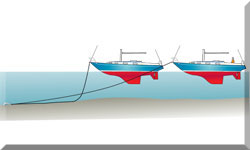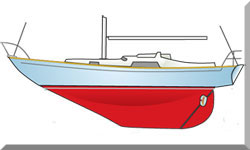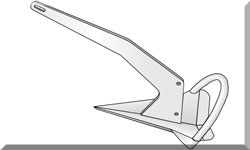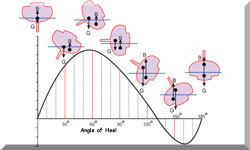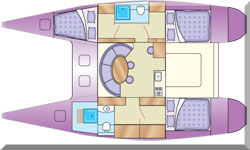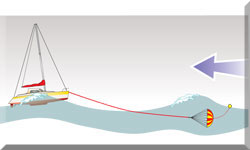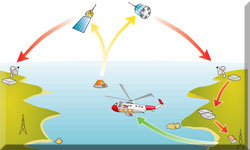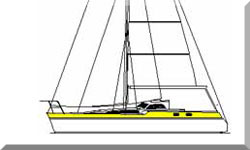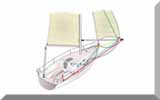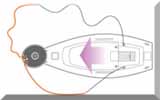- Home
- Electronics & Instrumentation
- GMDSS for Cruising Sailors
GMDSS for Cruising Sailors: Your Questions Answered
The primary purpose of the Global Maritime Distress and Safety System (GMDSS) is to enhance maritime safety by ensuring that ships at sea can communicate effectively during emergencies.
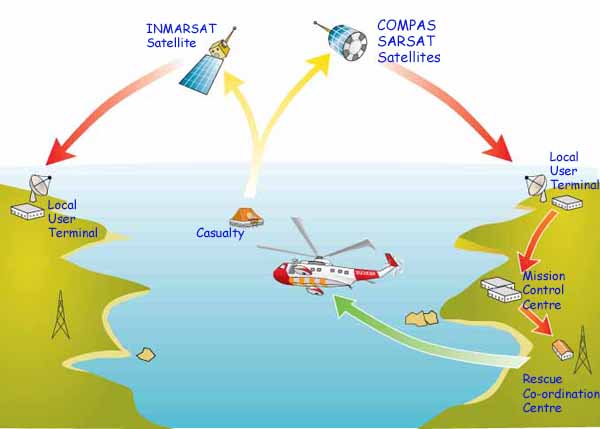 The Global Maritime Distress and Safety System (GMDSS)
The Global Maritime Distress and Safety System (GMDSS)It provides a standardized framework for distress alerting, search and rescue coordination, and the dissemination of maritime safety information.
By integrating satellite and terrestrial communication systems, GMDSS enables rapid and reliable communication between ships, shore-based rescue authorities, and other vessels in the vicinity.
This system is designed to save lives by facilitating timely and efficient responses to distress situations.
Your GMDSS Questions Answered:
What are the functional requirements of GMDSS, and how do they ensure safety at sea?
What are the functional requirements of GMDSS, and how do they ensure safety at sea?
The functional requirements include transmitting and receiving distress alerts, search and rescue communications, on-scene communications, signals for locating, maritime safety information, and general radiocommunications.
For recreational sailors, understanding these functions is crucial for ensuring safety during emergencies. For example, distress alerts can be sent automatically via Digital Selective Calling (DSC) or manually using VHF radios, providing a lifeline in critical situations.
What specific equipment is required for different sea areas (A1, A2, A3, A4), and how does it operate?
What specific equipment is required for different sea areas (A1, A2, A3, A4), and how does it operate?
Recreational sailors typically operate in Sea Area A1, which requires VHF radios with DSC capabilities. For those venturing further, MF radios (Area A2) or satellite systems like INMARSAT (Area A3) may be necessary. Understanding the operational range and limitations of each equipment type helps sailors choose the right tools for their voyages.
What are the daily, weekly, and monthly maintenance requirements for GMDSS equipment?
What are the daily, weekly, and monthly maintenance requirements for GMDSS equipment?
Regular maintenance ensures the reliability of GMDSS equipment.
- Daily checks involve verifying power sources and operational readiness.
- Weekly tests include sending test distress alerts to confirm functionality.
- Monthly inspections cover antenna connections and battery health.
Recreational sailors should prioritize these routines to avoid equipment failure during emergencies.
How does GMDSS facilitate distress communication between ships and Rescue Coordination Centres (RCCs)?
How does GMDSS facilitate distress communication between ships and Rescue Coordination Centres (RCCs)?
GMDSS uses satellite and terrestrial systems to relay distress signals to RCCs. For recreational sailors, this means that pressing the distress button on a DSC-enabled VHF radio or activating an EPIRB (Emergency Position Indicating Radio Beacon) can alert authorities and nearby vessels, even in remote areas.
What are the SOLAS requirements for GMDSS compliance, and which ships are mandated to carry GMDSS equipment?
What are the SOLAS requirements for GMDSS compliance, and which ships are mandated to carry GMDSS equipment?
SOLAS mandates GMDSS compliance for cargo ships over 300 GT and all passenger ships on international voyages. While recreational vessels are not required to comply, adopting GMDSS equipment voluntarily enhances safety. For instance, carrying a VHF radio with DSC and an EPIRB can significantly improve emergency response capabilities.
What are the energy requirements for GMDSS equipment, and how can ships ensure uninterrupted operation?
What are the energy requirements for GMDSS equipment, and how can ships ensure uninterrupted operation?
GMDSS equipment requires reserve power sources capable of operating for at least one hour on ships with emergency generators and six hours on ships without them. Recreational sailors can use dedicated batteries or solar panels to ensure uninterrupted operation during power outages.
How do INMARSAT systems integrate with GMDSS for global communication?
How do INMARSAT systems integrate with GMDSS for global communication?
INMARSAT provides satellite communication services for distress alerts, maritime safety information, and general communication. Recreational sailors can use INMARSAT-C terminals for reliable global coverage, especially when sailing beyond VHF and MF range.
What are the specific frequency ranges used for maritime communication under GMDSS?
What are the specific frequency ranges used for maritime communication under GMDSS?
GMDSS uses specific frequencies for distress and routine communication. For example, VHF Channel 16 (156.8 MHz) is designated for distress calls, while Channel 70 (156.525 MHz) is used for DSC alerts. Recreational sailors should familiarize themselves with these frequencies to ensure effective communication during emergencies.
How can recreational sailors ensure their GMDSS equipment is compatible with international standards?
How can recreational sailors ensure their GMDSS equipment is compatible with international standards?
Recreational sailors can ensure compatibility by purchasing equipment certified by the International Maritime Organization (IMO) and adhering to SOLAS guidelines.
For example, VHF radios with Digital Selective Calling (DSC) and Emergency Position Indicating Radio Beacons (EPIRBs) should meet IMO performance standards.
Registering for a Maritime Mobile Service Identity (MMSI) number and connecting the radio to a GPS system ensures seamless operation.
How does GMDSS integrate with modern navigation systems like GPS and AIS (Automatic Identification System)?
How does GMDSS integrate with modern navigation systems like GPS and AIS (Automatic Identification System)?
GMDSS integrates with GPS to provide accurate location data during distress alerts. AIS enhances safety by broadcasting vessel identity and position, which is critical for rescue operations. This integration ensures precise tracking and efficient communication during emergencies.
What are the limitations of GMDSS in polar regions (Sea Area A4), and how can sailors prepare for emergencies in these areas?
What are the limitations of GMDSS in polar regions (Sea Area A4), and how can sailors prepare for emergencies in these areas?
In polar regions, satellite coverage is limited, making HF radios essential for communication. Sailors should carry HF radios with DSC capabilities and ensure proper maintenance of antennas and batteries. Familiarity with polar navigation and survival techniques is also vital.
How can sailors use GMDSS to receive maritime safety information, such as weather updates and navigational warnings?
How can sailors use GMDSS to receive maritime safety information, such as weather updates and navigational warnings?
GMDSS provides maritime safety information through NAVTEX receivers and satellite systems like INMARSAT. Recreational sailors can use these systems to receive weather forecasts, navigational warnings, and distress alerts, ensuring informed decision-making during voyages.
What are the differences between EPIRBs (Emergency Position Indicating Radio Beacons) and PLBs (Personal Locator Beacons), and which is better for recreational sailors?
What are the differences between EPIRBs (Emergency Position Indicating Radio Beacons) and PLBs (Personal Locator Beacons), and which is better for recreational sailors?
EPIRBs are designed for maritime use and automatically activate when submerged, providing global coverage via satellite. PLBs are smaller, manually activated, and suitable for personal use. Recreational sailors should choose EPIRBs for extended voyages and PLBs for coastal trips.
How can sailors troubleshoot common issues with GMDSS equipment, such as signal interference or power failures?
How can sailors troubleshoot common issues with GMDSS equipment, such as signal interference or power failures?
Troubleshooting involves checking antenna connections, battery voltage, and signal strength. Sailors should ensure proper grounding of equipment and avoid interference from other electronic devices. Regular maintenance and testing help identify and resolve issues proactively.
What training or certification is recommended for recreational sailors to effectively use GMDSS equipment?
What training or certification is recommended for recreational sailors to effectively use GMDSS equipment?
Training courses like the Short Range Certificate (SRC) or Long Range Certificate (LRC) provide essential knowledge about GMDSS operation. These certifications cover distress communication, equipment handling, and emergency procedures, ensuring sailors are well-prepared.
Recent Articles
-
How a Marine EPIRB Can Get You into Trouble, As Well As Out Of It
Apr 12, 25 05:51 PM
Activating a marine EPIRB or a Personal Locator Beacon (PLB) when you're not in distress can get you in big trouble with the Coastguard, as this cautionary tale relates. -
What is an EPIRB?
Apr 12, 25 05:43 PM
Got any EPIRB-related questions? You're almost certain to find the answers here... -
What is a Chartplotter? Your Questions Answered
Apr 12, 25 04:48 AM
Got any questions about marine GPS chartplotters? Odds are, you'll find your answer here...

